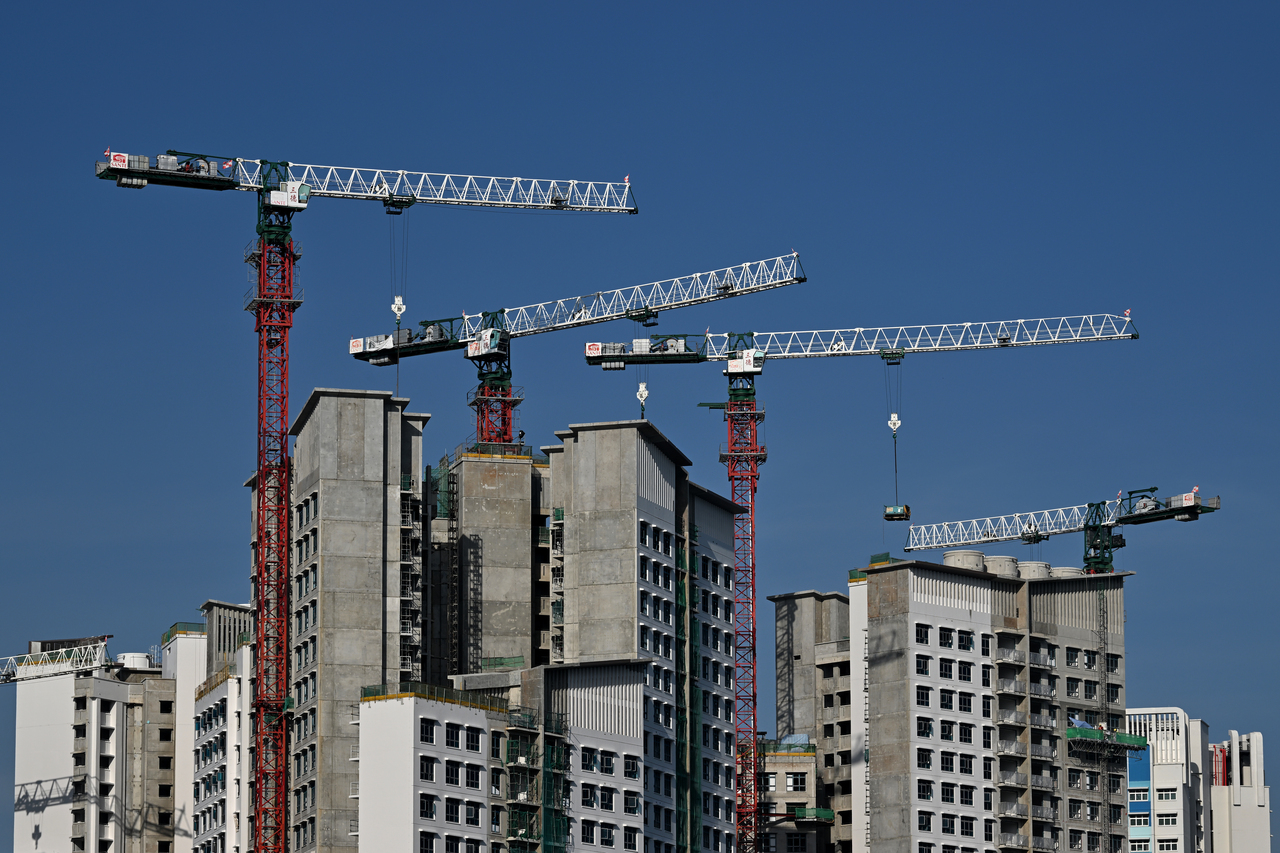URA to explore newer flat layouts, green efforts to tackle climate change
Sign up now: Get ST's newsletters delivered to your inbox

Housing typologies will also be explored to serve the needs of different population segments.
ST PHOTO: LIM YAOHUI
Follow topic:
SINGAPORE - Singaporeans in future could potentially home in on living options marked by newer flat layouts, sizes and features, with both public and private housing in accessible locations within or near the city centre.
Housing typologies will also be explored to serve the needs of different population segments, such as seniors and people with disabilities, National Development Minister Desmond Lee said at a virtual dialogue on the Urban Redevelopment Authority's (URA) long-term plan review on Saturday (April 16).
The URA is also studying how to build more flexible spaces in residential neighbourhoods, which can be adapted to respond to unforeseen situations like Covid-19.
More than 15,000 Singaporeans have participated in URA's engagement efforts since it launched them in July last year.
The authority is now in its third phase of the review, after two phases of engaging Singaporeans to come up with aspirations and possible strategies for land use.
Mr Lee chaired the second dialogue on the future of living and the environment, attended by 250 members of the public.
Last Saturday (April 9), Second Minister for National Development Indranee Rajah covered discussions on the future of work and future of mobility.
Mr Lee said: "These conversations have helped us to better understand the aspirations of Singaporeans, and helped us to crowdsource ideas that we can study further.
"With your contributions, our plans have been strengthened, so we can be more ready for an uncertain future."
He noted how participants said they would like to have more amenities for social interaction and community bonding near their homes, to revive the kampung spirit.
To foster interaction, more facilities in schools could be better utilised so the public can enjoy them, Mr Lee added.
He said URA is working with the Ministry of Education to explore how to plan and design this in new schools and schools undergoing major renovations.
URA also said it will plan for publicly accessible communal spaces - for instance, the future Tengah Town will have community-centric and car-lite spaces to facilitate community activities.
Mr Lee noted that participants said more can be done to integrate Singapore's heritage into the urban fabric.
"Taking this on board, we recently announced that we will build on our existing conservation framework by implementing a structured Heritage Impact Assessment process," he said.
Under the framework, URA and the National Heritage Board have to be consulted whenever a public project is likely to significantly impact an important heritage site.
To strengthen such efforts, URA is developing a plan to map out heritage and identity assets, including those in the heartland and conserved buildings.
It is also studying the new concept of identity corridors - stitching together areas with rich elements of heritage, memories and unique landscapes.
The plan would guide URA in developing initiatives to improve heritage assets, such as making them more accessible to the public.
Mr Lee also acknowledged participants' care for the environment, such as climate change and sustainability.
Efforts to strengthen Singapore's natural capital can be built on, such as by recognising the ecological profile of different green spaces and protecting the most ecologically sensitive sites, he said.
The National Parks Board has started an islandwide ecological profile exercise to do so.
"This will also guide us in determining the treatment of each site, and in better integrating nature within our city by enhancing design interventions and updating our policies," he added.
In terms of sustainability, Mr Lee said more alternative energy sources will be tapped to drive Singapore's transition to a low carbon society.
For example, Punggol Point Crown will be the country's first super low energy Build-To-Order project, with at least 60 per cent energy savings.
Mr Lee said: "We will also plan ahead to make our city more resilient to climate change, such as rising sea levels and temperatures."
Nature-based interventions can be combined with hard-engineering measures to protect coastlines, and urban design strategies can be used to mitigate the urban heat island effect - where urban areas in the city become hotter than rural ones.
"If we can do this well, we are confident we will be able to turn our constraints into competitive advantages, and perhaps even help Singapore become a regenerative city that seeks to do more for the environment than it takes away," Mr Lee added.
"The (long-term plan review) is not just about building a city that works. It is about designing, building and growing a home for our people - our family, friends, neighbours - as well as future generations not yet born."
The fourth phase of the review will be in mid-2022, when URA will hold a public exhibition to present the plans with more details.
Correction note: This article has been updated for clarity.

